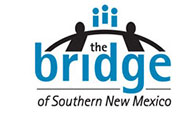Business Voice Critical to CTE and Workforce Connections
Originally published in El Prospero of the Las Cruces Bulletin – September 2019
When I was in high school in the 80’s, “vocational education” included four classes for my fellow students who had little or no intention of going to college, rather planning to head straight to work after graduation.
Today’s Career and Technical Education (CTE) is completely different. It’s now one of the best paths for all students to gain early access to college-level coursework and to earn career certifications and two-year degrees that benefit them in both the academic and employment spheres.
CTE students graduate high school at higher than 90% across the board. That outpaces the rates for non-CTE students by as much as 15-20 points in some districts. And those rates hold true for students of color and low-income students.
CTE blends real-world, hands-on experience (work-based learning) with academic knowledge and valuable college credentials in areas like aerospace, computer information, health, and electronics, as well as welding, HVAC, Water, and Automation & Manufacturing. CTE is a vital contributor to pools of well-qualified talent in every level of the workforce, but most especially in the well-paying, high-demand technical and middle skills jobs.
And, as any CTE teacher will tell you, CTE is STEM (Science, Technology, Engineering, and Math) and that alone makes CTE graduates valuable contributors to the world of work at any level. For graduates, STEM-related jobs pay 10% more than non-STEM jobs. Truly a win-win situation!
In a world of political divides, CTE is actually one of few things both parties agree on, because of the enormous benefits to students. And now, thanks to the reauthorization of the federal funds that pay for CTE in the “Strengthening Career and Technical Education for the 21st Century Act,” or Perkins V for short, the value of CTE for business and employers just keeps getting better, because business voice and involvement is more important than ever.
Perkins V calls for stronger local input from stakeholders (a.k.a. business, public schools, and higher education institutions) about what programs and skills are most vital to a community and where students would have the greatest ability to increase their employment and earning potential.
The Public Education Department’s (PED) College and Career Readiness Bureau is overseeing the input and implementation of Perkins V funds to support high-quality CTE programs for students, though CTE programs are available in both high school and community college.
As part of that effort, the PED is launching a series of community stakeholder sessions to listen to New Mexico’s communities, as the department begins to map out a four-year plan for the use of these precious federal dollars.
The conversation comes to the Las Cruces Hilton Garden Inn on Sept. 5, from 12 to 3 p.m. And yes, lunch will be available for those who attend.
This is a truly great opportunity for employers to address the gaps they see in their own workforce today, as well as speak to needs they can see coming in this age of technological disruption.
Once the community conversations are completed, the department will conduct a local needs assessment of the local labor market using data from the Department of Workforce Solutions. Interestingly, it is the conversations that may provide the best real-time data, because many of the latest and greatest jobs and careers (like cybersecurity, artificial intelligence, data analytics) don’t always make it into the federal database of jobs that show up in labor market information. Apparently, that’s about a 10-year process.
And, in what is unique to New Mexico (as far as we know), the actual application for Perkins V funds will be made on behalf of a local “consortia.” Across the state, consortia will bring unity and clarity for prioritization of the use of funds, because they’ll be comprised of representatives of not just education, but business and economic development.
Essentially, the consortia give communities the opportunity to come together across sectors and speak with one voice – a model that looks a lot like the composition of The Bridge of Southern New Mexico. Business and economic development will be able to become more active participants alongside educators in the cultivation of their own youth and young adults – New Mexico’s True Talent!
The benefits of this conversation will (hopefully) also lay the foundation for a simultaneous effort underway through the Department of Workforce Solutions. Each of our state’s four local workforce boards are about to define at least two industry Sector Strategies for their regions in the next year with more to follow year-by-year.
By mapping out the industries with the greatest employment opportunities and earning potential, the local boards can prioritize the use of these federal workforce dollars to better support both of the clients they serve: businesses in those sectors and job seekers eager to gain well-paid employment opportunities.
It’s a great moment when the stars (and federal dollars) align to spark greater economic opportunity for New Mexicans and provide New Mexico businesses with greater access to the most important element for success – well-qualified people.
In Dona Ana County, we know how powerful the voice of business can be in sparking change. I highly encourage you to bring your voice to this process and help our state pave the way for academic and economic impact for you and the New Mexico True Talent vital to your success!

